How to care for a mistletoe cactus – top tips for looking after this cascading succulent indoors
Try growing one of these gorgeous houseplants at home with these pro tips
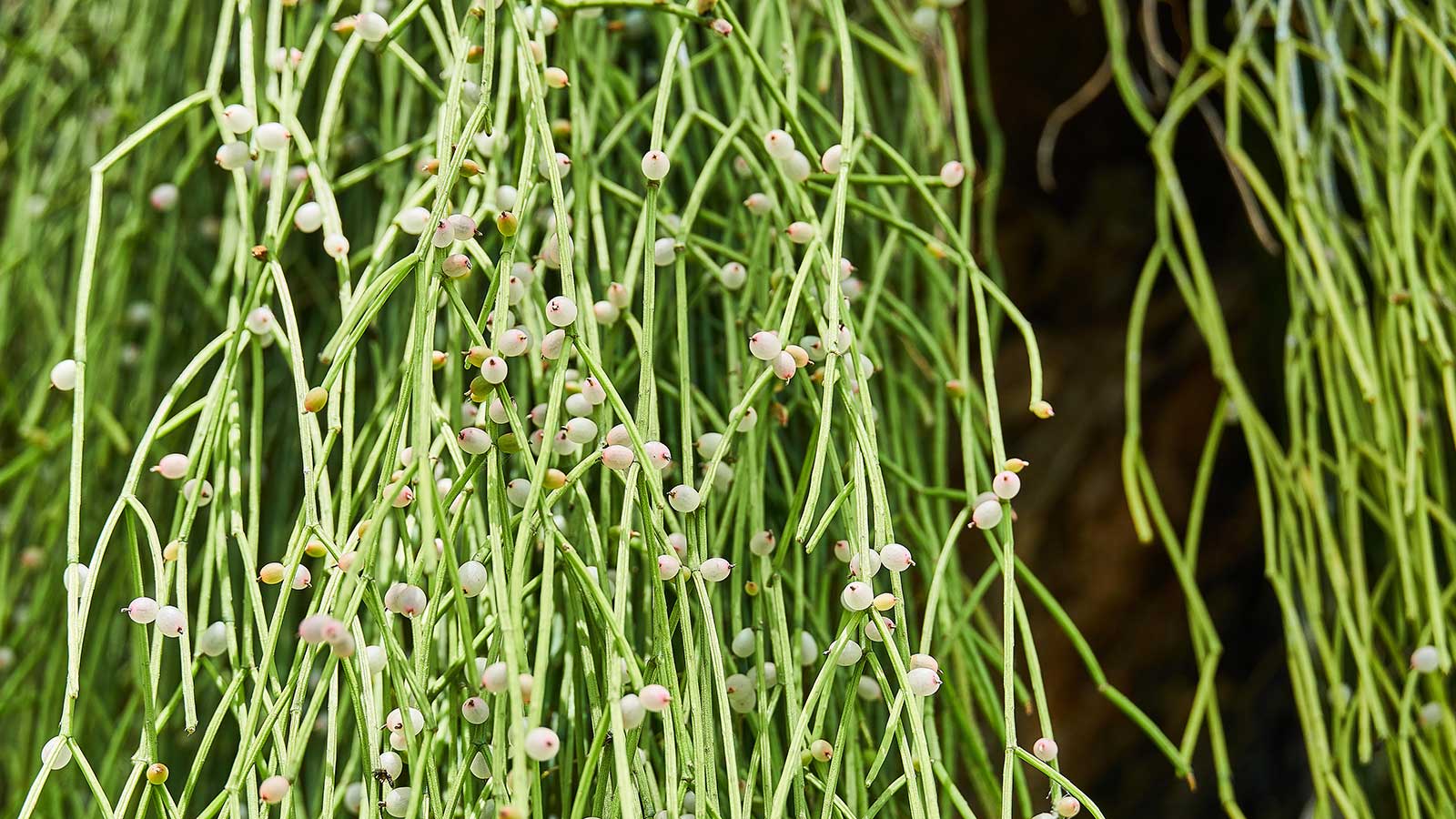

The mistletoe cactus, otherwise known as Rhipsalis baccifera, is an attractive type of succulent. And, although originally hailing from tropical climes, it's well-suited for growing as a houseplant.
Placing these indoor plants up high will show off their elegant, trailing foliage. With the right growing conditions, they can also produce delicate white blooms in spring, followed by pearly berries.
What's more, mistletoe cacti are an easy houseplant to look after, making them a good choice for beginner plant parents. But there are still a few things you'll need to get right to help them thrive.
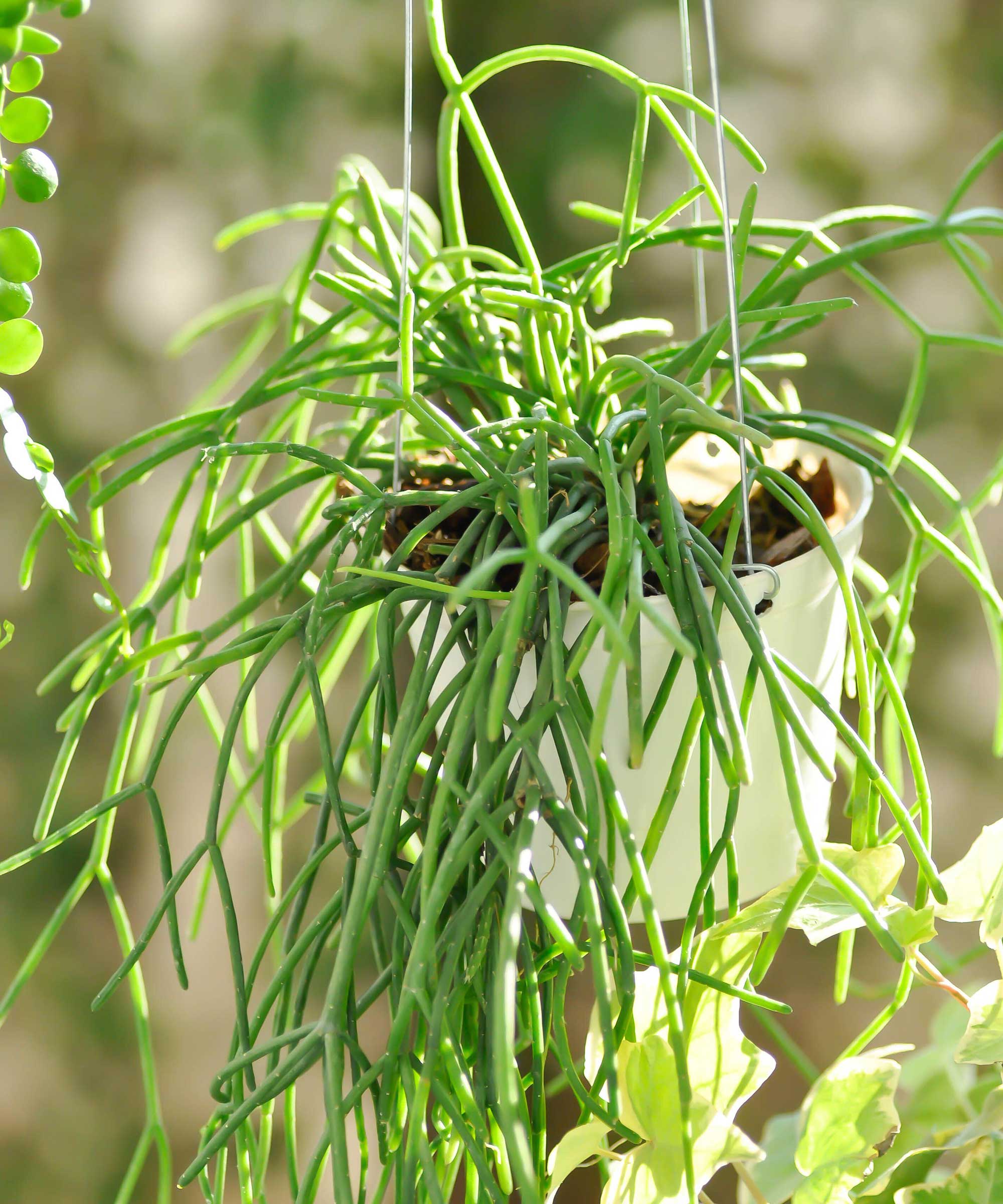
Mistletoe cactuses have long, elegant stems
3 tips to keep your mistletoe cactus happy and healthy
This advice will help you provide proper care for these trailing houseplants.

Try hanging these succulents up high to show off their form
1. Provide the correct amount of moisture
Unlike desert cacti, the mistletoe cactus requires more frequent watering, says Kayla Gajdascz of Mental Houseplants.
'Water when the top inch of soil feels dry. Ensure the pot has good drainage to prevent water from sitting at the bottom, as this can lead to root rot,' she adds. 'During the winter months, reduce watering as the plant goes into a dormant phase.
'Being a tropical plant, Rhipsalis baccifera enjoys higher humidity,' Kayla continues. 'If your home is dry, especially in winter, consider using a humidifier or placing the plant on a pebble tray with water.'
This 3-liter humidifier from Levoit at Amazon is well-rated.
Paris Lalicata of The Sill suggests using a standard indoor potting mix that is well-draining. While you can use a cacti-specific soil for the plant, they usually don't have a lot of nutrients or retain moisture for long periods, she says. 'Therefore, you may see yourself watering a bit more frequently, as well as needing to fertilize periodically.'
Top tip: 'Do not fertilize in the winter when the plant's growth slows down,' Kayla says.

Kayla Gajdascz is the co-founder and president of Mental Houseplants, a company dedicated to spreading the positive impact that plants have on our mental health. One way that the company does this is by partnering with NAMI, the National Alliance on Mental Illness (the Massachusetts chapter), and donating a portion of every sale to them.
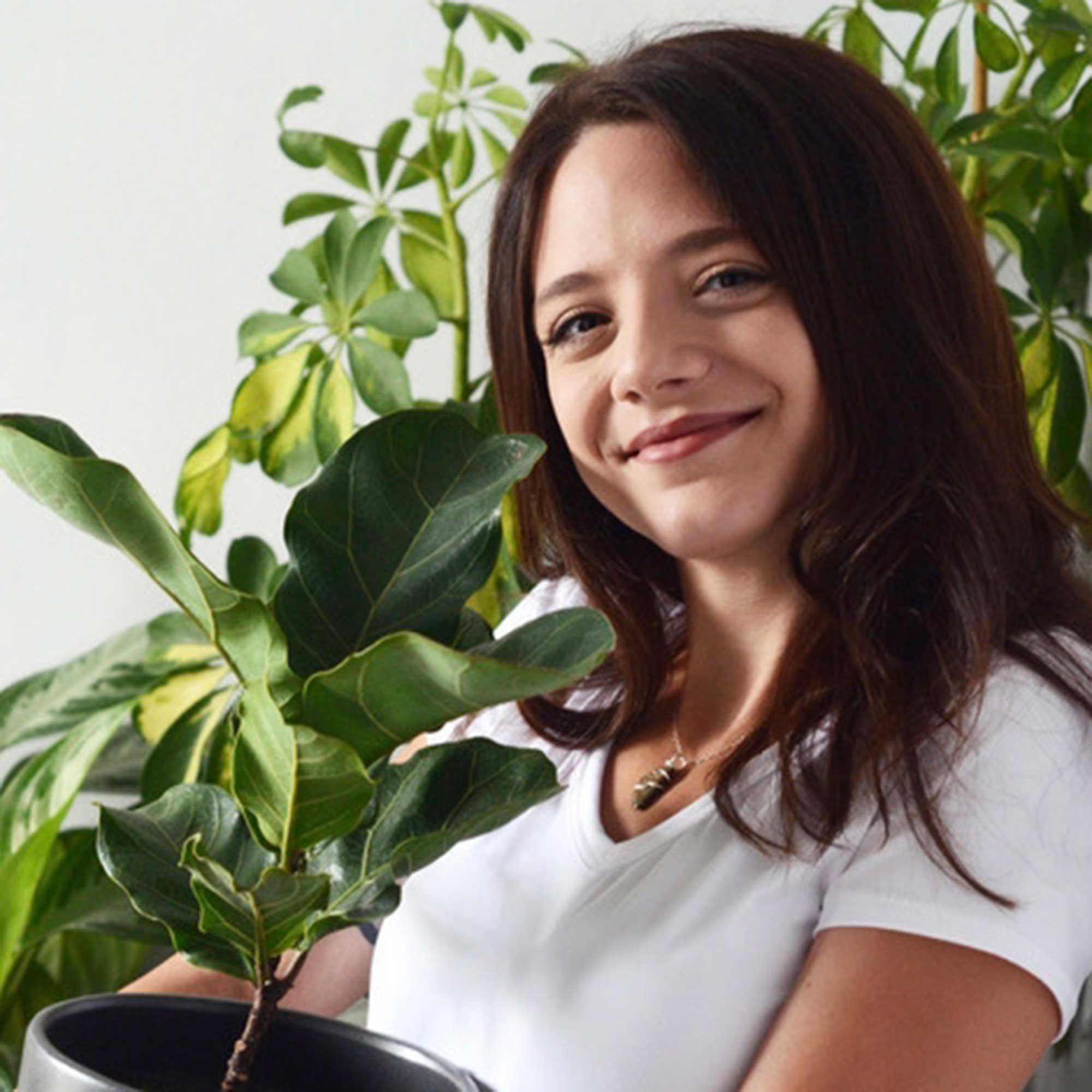
Paris has been with The Sill for almost five years and heads up Plant Education and Community. A self-taught plant expert with over ten years of experience growing houseplants, she currently maintains an indoor garden of more than 200 plants in the northeast. Her passion is making plant care more digestible for budding plant parents and sharing the many benefits of having plants indoors.
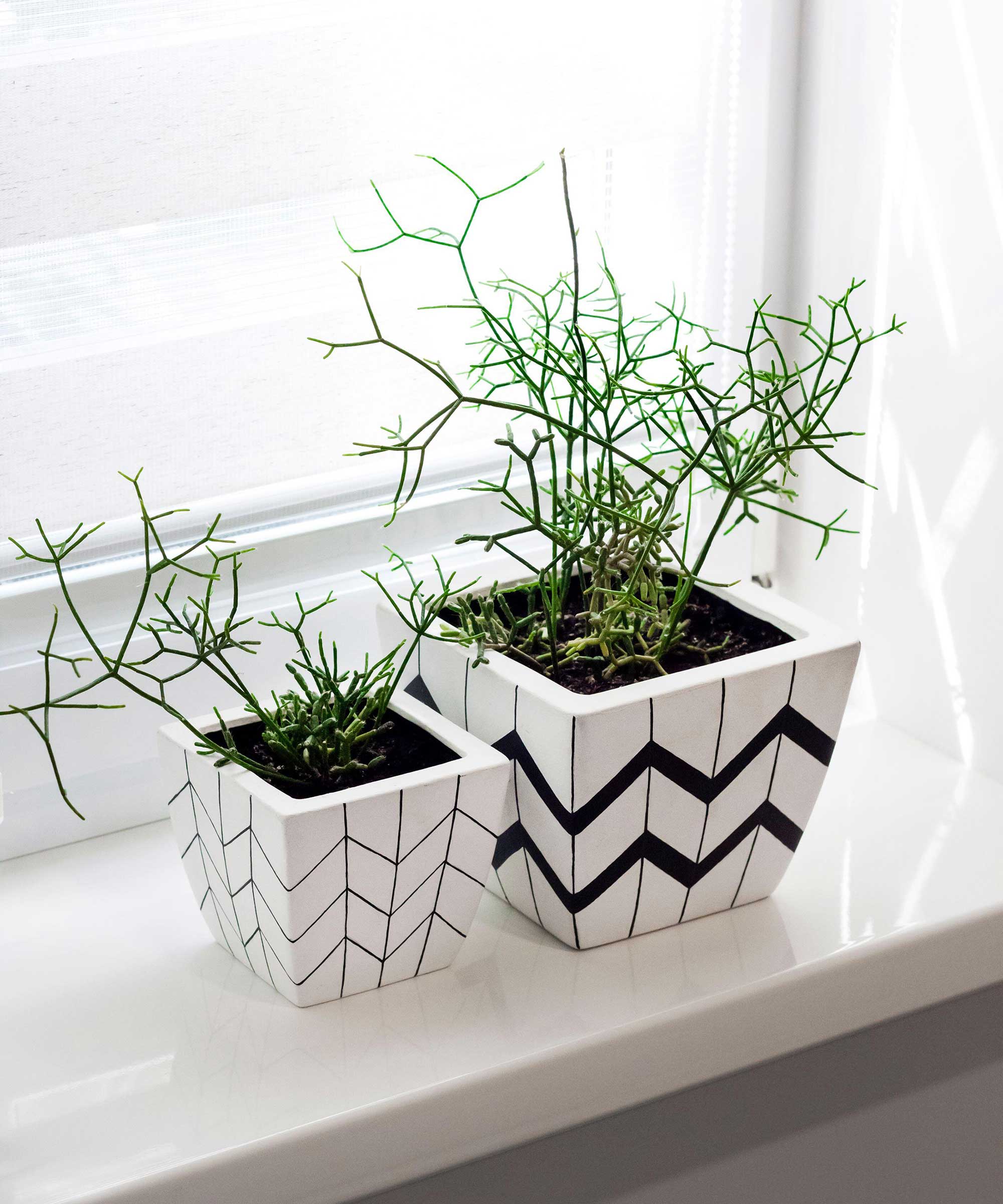
Mistletoe cactuses need more moisture than desert varieties
2. Get the lighting right
'Rhipsalis baccifera prefers bright, indirect light,' says Kayla. 'Direct sunlight can be too harsh and cause the plant to scorch, especially during the hotter parts of the day.' On the other hand, leggy growth or a pale coloration can indicate insufficient light, she adds.
Paris suggests putting it in an east-facing window, as the morning direct sun won't be too strong for it.
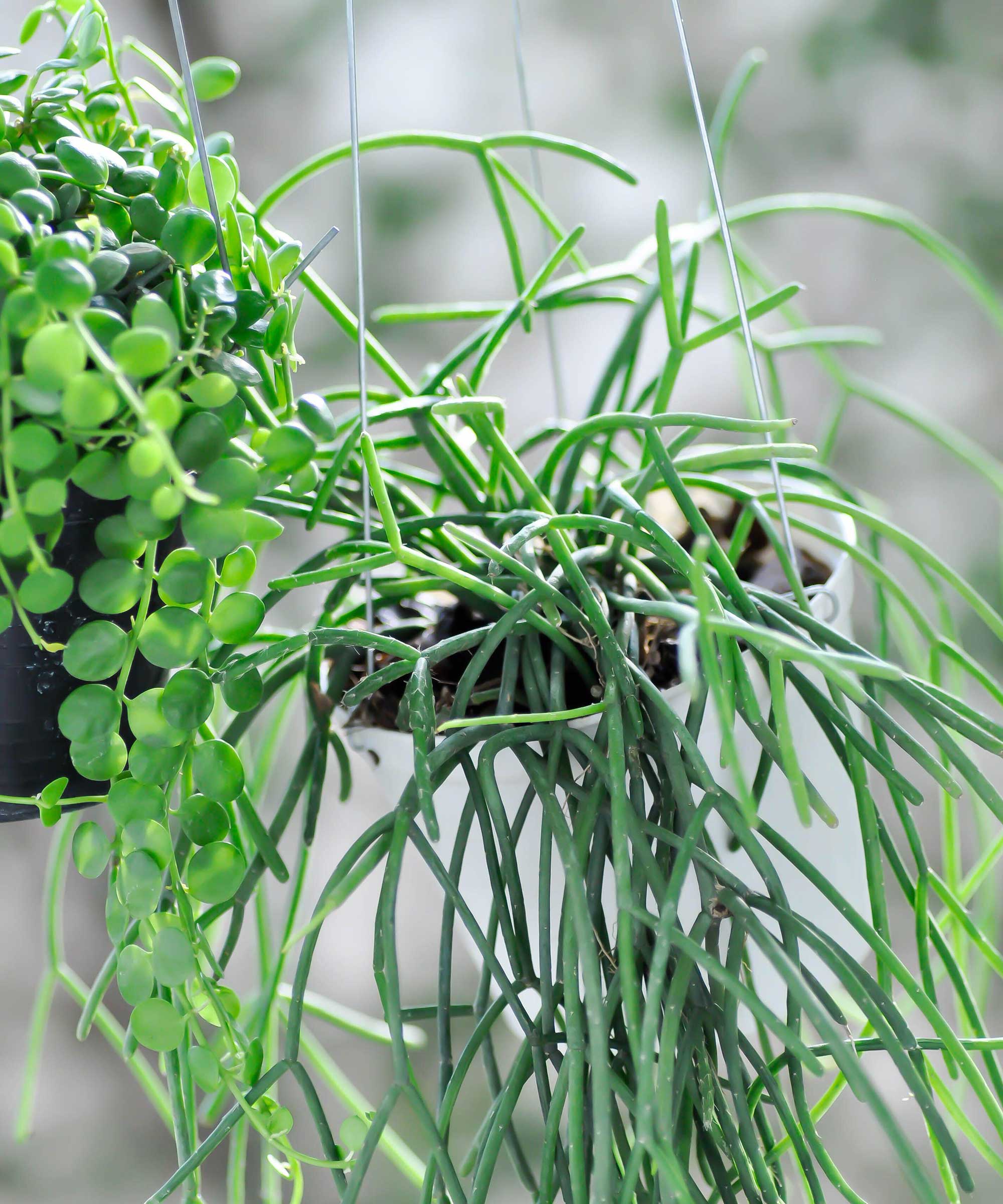
Bright, indirect light is best for these plants
3. Repot your mistletoe cactus when needed
'Repot your mistletoe cactus every two to three years, or when it outgrows its pot,' says Kayla.
'Choose a pot that is about 1-2 inches larger than its current pot and ensure it has good drainage holes. Repotting is best done in the spring or early summer to induce less stress on the plant.'
Top tip: All indoor plants will benefit from repotting when the time is right, from jade plants to monsteras.

Healthy mistletoe cactuses may produce berries
FAQs
What are some common problems when growing mistletoe cacti?
'As long as you provide the proper environment and care, this plant doesn't really have many issues and is very easy to care for,' says Paris Lalicata from The Sill. However, if it doesn't get enough light, or you leave the soil dry for too long, leaf drop and browning can occur, she warns. 'The plant will also rot if it's overwatered.'
Keep an eye out for common houseplant pests, too, Kayla highlights. These include aphids, spider mites, and mealybugs. 'Treat infestations promptly with insecticidal soap or neem oil,' she suggests.
How can you propagate mistletoe cactuses?
You can propagate these succulents by taking plant cuttings. Once you've removed the sections of stem, leave them somewhere dry for a day or so to allow the cut ends to form callouses. Then, plant the cut ends into small pots of moistened, well-draining potting soil. In time, they should develop roots.
The mistletoe cactus is a less familiar houseplant to some, but if you can find one, it makes a great addition to the home. And, if you're looking for more low-maintenance plants to include in your collection, consider pothos, spider plants, and peace lilies, too.
Sign up to the Homes & Gardens newsletter
Design expertise in your inbox – from inspiring decorating ideas and beautiful celebrity homes to practical gardening advice and shopping round-ups.

Holly started writing about gardening five years ago, and she is a regular contributor to Homes & Gardens. She has also written many gardening features for Woman & Home and Real Homes, too. She has previous experience as a professional gardener, where she helped to plant and maintain private gardens. Holly has also looked after allotment plots over the years and loves to grow her own flowers and veggies from seed. In her spare time, she enjoys visiting local gardens, botanical drawing, and tending to her ever-growing collection of houseplants.
-
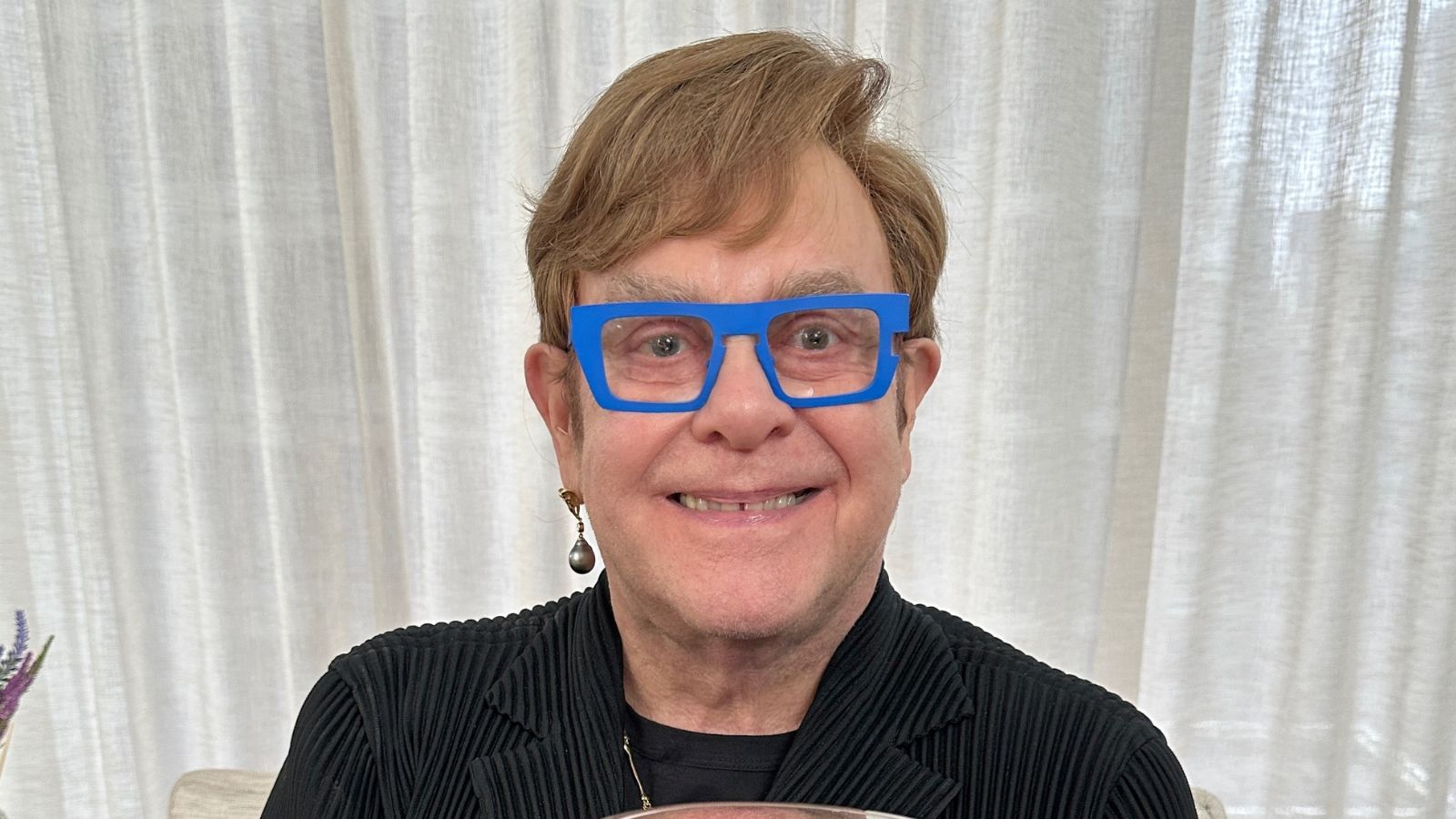 Elton John's home fragrance collection is 'a tribute to the optimism and beauty that spring brings' – and it's under $45 to scent your home this April
Elton John's home fragrance collection is 'a tribute to the optimism and beauty that spring brings' – and it's under $45 to scent your home this AprilSlatkin + Co. teamed up with Elton John to create a home scent inspired by his historic Woodside Estate – they're beautiful, affordable, and selling quickly
By Sophie Edwards
-
 My orchid's leaves haven't wrinkled since moving it to this exact spot in my home – it's the easiest hack to keep these flowering houseplants hydrated
My orchid's leaves haven't wrinkled since moving it to this exact spot in my home – it's the easiest hack to keep these flowering houseplants hydratedDehydrated orchids can perk up again in the environment of a bathroom
By Tenielle Jordison